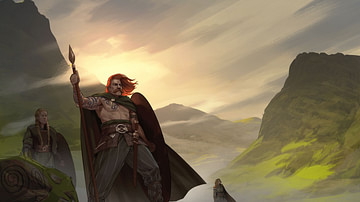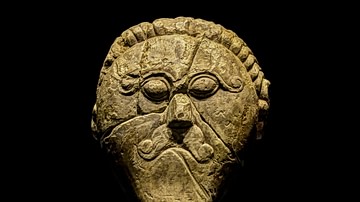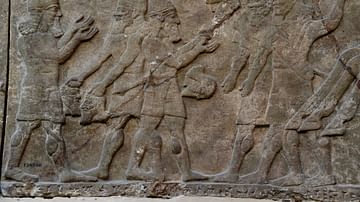Search
Did you mean: Agora?
Search Results

Definition
D-Day
D-Day was the first day of Operation Overlord, the Allied attack on German-occupied Western Europe, which began on the beaches of Normandy, France, on 6 June 1944. Primarily US, British, and Canadian troops, with naval and air support, attacked...

Definition
Celtic Warrior
The warriors of Celtic Europe were amongst the most distinctive of any fighters in the ancient world. With their great height, long hair and moustaches, frequent nakedness, painted and tattooed bodies, and fondness for collecting enemy heads...

Definition
Blackbeard
Blackbeard (d. 1718), otherwise known as Edward Teach (probably an assumed name), was an infamous English pirate who operated in the Caribbean and Atlantic during a surprisingly short career lasting just 15 months. With his long black beard...

Definition
Kojiki - Japan's Oldest Book
The Kojiki ('Record of Ancient Things') is the oldest book of Japanese history and the oldest text of any kind from Japan. Compiled in 712 CE by the court scholar Ono Yasumaro, the work begins with the gods and the creation of the world...

Definition
Freyr
Freyr (Old Norse for 'Lord', sometimes anglicised as Frey) is the main fertility god in Norse mythology, his connection with harvests, sun and rain, virility, weddings, and his rule over wealth securing him an important position within the...

Definition
Ancient Celtic Sculpture
The sculpture of the ancient Celts between 700 BCE and 400 CE is nothing if not varied as artists across Europe developed their own ideas and borrowed what interested them from neighbouring cultures. Early Celtic stone and wood sculptures...

Definition
Myles Standish
Myles Standish (l. c. 1584-1656 CE) was the military advisor to the Plymouth Colony who traveled with the colonists (later known as pilgrims) aboard the Mayflower in 1620 CE. The colonists were made up of members of a religious separatist...

Article
The Life of Diogenes of Sinope in Diogenes Laertius
Diogenes of Sinope (c. 404-323 BCE) was a Greek Cynic philosopher best known for holding a lantern to the faces of the citizens of Athens claiming he was searching for an honest man. He was most likely a student of the philosopher Antisthenes...

Article
Wall Reliefs: Ashurnasirpal II's War Scenes at the British Museum
The Mighty King 600 of their warriors I put to the sword and decapitated; 400 I took alive; 3,000 captives I brought forth; I took possession of the city for myself: the living soldiers, and heads to the city of Amidi the royal city, I sent...

Article
Hubmaier's Concerning Heretics and Those Who Burn Them
Balthasar Hubmaier (l. 1480-1528) was a Catholic theologian who converted to the Protestant Anabaptist sect in 1525. His Concerning Heretics and Those Who Burn Them (1524) was a plea for religious tolerance written prior to his conversion...